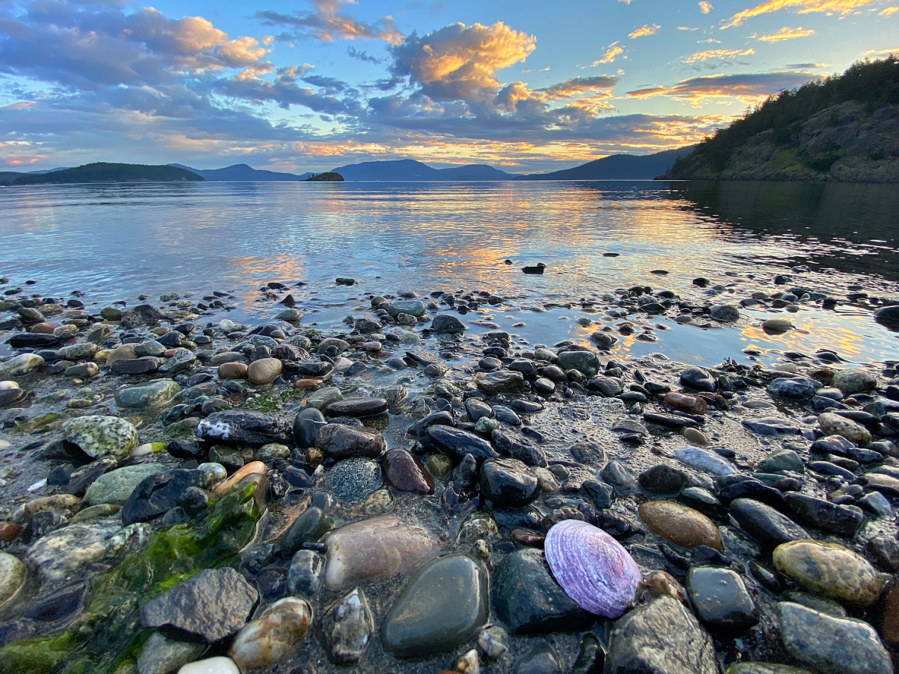Kennewick — When you think of sharks, your first thought probably isn’t of the Washington Coast and the greater Salish Sea that continues on to Canada. But the Evergreen State’s waters consistently host a dozen species of sharks, according to the Washington Department of Fish and Wildlife.
Don’t let that discourage you from trips along the beautiful Washington Coast — chances of a shark attack in the state are extremely low. So low in fact, that only two unprovoked attacks have been recorded since 1837, the oldest available records. Both occurred in Grays Harbor County and neither resulted in death.
Experts still recommend exercising caution when in possibly shark-infested waters. Many shark attack cases are the result of mistaken identity, occurring because a person resembled a shark’s primary food source. By keeping this in mind, you can prevent attracting sharks.
Swimsuit color does matter in the water, even though sharks are colorblind. They’re keen observers of contrast, so bright colors in dark water, and vice versa, could you make you stand out. Same goes for intense patterns.
Another contrast sharks will pick up on sometimes is dark tattoos against pale skin. Depending on the size, color and shape of the tattoo, this can sometimes look like food to sharks. If you have a large, contrasting tattoo, consider wearing a cover-up or waterproof concealer before entering water sharks inhabit.
- What other things attract sharks?
If you can move something you are wearing underwater and you see what looks like the flash of a swimming fish, so can a shark. This includes jewelry, nail polish (especially if it’s shiny) and dive watches. If you’re wearing dive gear, tuck accessories underneath your suit or take them off.
Many sharks tend to feed between dusk and dawn, so it’s safer to stay out of the water overnight.
A last indicator you may have attracted a shark is a school of fish or group of birds suddenly changing course. They were likely encouraged by something, probably prey, and it’s a good idea to head that way too.
Knowing what sharks are in the Evergreen State and what they eat, you can take steps to avoid looking like a tasty shark treat.
Great white sharks do not inhabit the Puget Sound, but they do occasionally approach Washington’s Pacific Ocean Coast. Here are some species more common in Washington than great whites.
- Basking shark: One of three plankton-eating sharks and the second-largest living shark is the basking shark. They tend to feed in deeper waters but have been known to come closer to shore from time to time.
Your chances of seeing one are fairly rare, but the large species is easy to recognize. It has extended gills and almost always has its mouth agape. Humans are of no interest to them, so the danger factor is low, but still exercise caution if you spot one.
- Blue shark: Blue sharks are generally between 6 and 10 feet long, but they can grow up to 13 feet. Their body is thin and dark blue with white bellies. These sharks usually eat at night, choosing fish, crabs, shrimp and octopi.
- Bluntnose sixgill shark: This deep-dwelling carnivorous shark is known as one of the most widespread in the world. Most shark species have five gill slits, but these sharks have six, hence the name. Feeding on other sharks, fish and rays, bluntnose sixgills spend time in shallow water to feed and give birth.
- Broadnose sevengill shark: You can spot a broadnose sevengill shark by its seven gill slits and black and white spots on its fins. They eat other sharks, dolphins, seals, rays and more. WDFW reports they’ll eat “just about anything.”
- Brown catshark: A small, deep-dwelling shark that feeds on bottom-dwellers, you don’t have to worry much about the brown catshark. If you accidentally catch one, release it back into the water.
- Common thresher shark: One of three thresher shark species, the common thresher shark is the largest. The predators use their massive tail to stun prey and are phenomenal swimmers, able to boost themselves out of the water at times.
- Pacific spiny dogfish: The most common shark in Washington is the Pacific spiny dogfish, aka the mud shark. The small sharks have gray bodies with white bellies and live for around 80 years. They eat what is available to them, often small fish and invertebrates.
- Salmon shark: A great white lookalike, salmon sharks can grow up to 10 feet and have dark blue backs with white bellies. They’ll eat what’s available, most often salmon, squid, herring and other fish species.
- Shortfin mako: One of the fastest sharks known to man, the shortfin mako migrates often and can be found in many places across the world.
- Soupfin shark: Feeds on invertebrates and smaller fish. Adults grow around 6 to 6.5 feet long.



